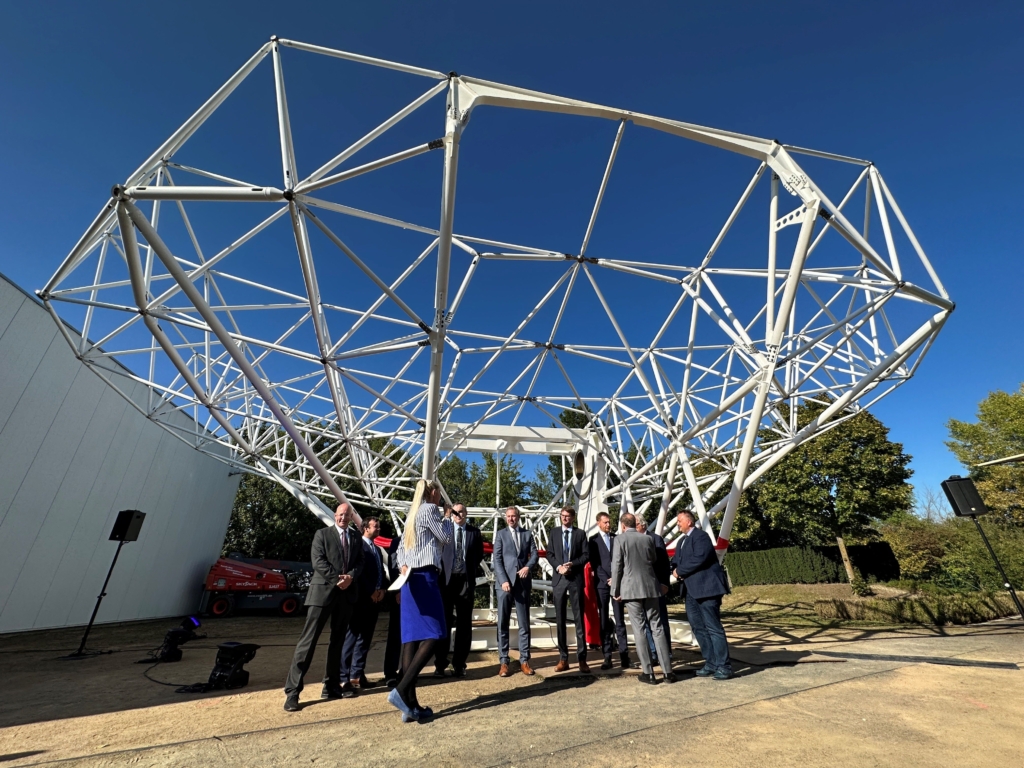FUor stars flare suddenly, erupting in brightness, before dimming again many years later. It is now understood that this brightening is due to the stars taking in energy from their surroundings via gravitational accretion, the main force that shapes stars and planets. However, how and why this happens remained a mystery—until now, thanks to astronomers using the Atacama Large Millimeter/submillimeter Array (ALMA).
Recent News
ASTRO ACCEL Announces Inaugural Cohort of Early Career Researchers
ASTRO ACCEL brings together researchers and practitioners in the domains of astronomy education, engagement, communication and culture to connect stakeholders and advance these areas of research, proudly unveils its inaugural cohort of eight early career researchers.
NSF Funds New Opportunity for Undergraduate Students
AUI and UNC-Chapel Hill are currently seeking undergraduate students to contribute to cutting-edge research in astronomy education. This paid opportunity, open to education and STEM majors, explores the impacts of new curriculum centered on the use of robotic telescopes.
German tech factory reveals antenna prototype—ngVLA will open a new window into the Universe

Usually it’s Octoberfest that draws a crowd to Germany this time of year. For hundreds of folks gathered at mtex antenna technology in Schkeuditz, it’s a first look at a prototype radio telescope that may one day be part one of the world’s largest and most sensitive radio telescopes in the world, the National Radio Astronomy Observatory’s (NRAO) next generation Very Large Array (ngVLA). The prototype antenna was unveiled to an excited crowd of government and business leaders, scientists, engineers, and the press from Germany and US.
The prototype antenna’s 18-meter dish, just under the height of a six-story building, is composed of 76 individual aluminum panels assembled in a striking 8-sided shape. “This design allows the surface of the dish to withstand whatever the environment throws at it—extreme temperature, wind, gravity—the reflector will maintain its precise shape within several microns, the equivalent of three human hairs,” explained Lutz Stenvers, managing director of mtex antenna technology. “The structure has 724 pieces, held together with 2,500 screws, weighing in at 43 tons. This design can be shipped in multiple containers to anywhere in the world, and assembled in very little time.”
Time and distance are important factors in ngVLA’s development. A total of 244 dishes are planned for the massive instrument, with a core array of telescopes working together throughout New Mexico and the American southwest, along with a longer baseline across the US, Mexico and Canada.
The ngVLA has received funding for design and project review from the National Science Foundation (NSF), who supports the majority of NRAO’s operations, with oversight from Associated Universities, Inc. (AUI.)
This preview of the antenna was the closing event for scientists and AUI, NRAO, and NSF staff attending a workshop exploring research opportunities for the ngVLA held at Max Planck Institute for Mathematics in the Sciences in Leipzig.
mtex has been awarded a $1 million state grant from the New Mexico Local Economic Development Act (LEDA) job-creation fund to assist with land, building, and infrastructure costs for their new Albuquerque facility. The City has pledged an additional $300,000 from its municipal LEDA funds.
NRAO’s partnerships with New Mexico Tech and the University of New Mexico are crucial to the ngVLA’s future. NRAO recently signed a new memo of understanding with the University of New Mexico to explore data housing, internships and training for astronomy, engineering, and other fields of STEM education.
The National Radio Astronomy Observatory is a facility of the National Science Foundation, operated under a cooperative agreement by Associated Universities, Inc.
This news article was originally published on NRAO website on September 28, 2023.
Recent News
Orion’s Erupting Star System Reveals Its Secrets
FUor stars flare suddenly, erupting in brightness, before dimming again many years later. It is now understood that this brightening is due to the stars taking in energy from their surroundings via gravitational accretion, the main force that shapes stars and planets. However, how and why this happens remained a mystery—until now, thanks to astronomers using the Atacama Large Millimeter/submillimeter Array (ALMA).
ASTRO ACCEL Announces Inaugural Cohort of Early Career Researchers
ASTRO ACCEL brings together researchers and practitioners in the domains of astronomy education, engagement, communication and culture to connect stakeholders and advance these areas of research, proudly unveils its inaugural cohort of eight early career researchers.
NSF Funds New Opportunity for Undergraduate Students
AUI and UNC-Chapel Hill are currently seeking undergraduate students to contribute to cutting-edge research in astronomy education. This paid opportunity, open to education and STEM majors, explores the impacts of new curriculum centered on the use of robotic telescopes.
